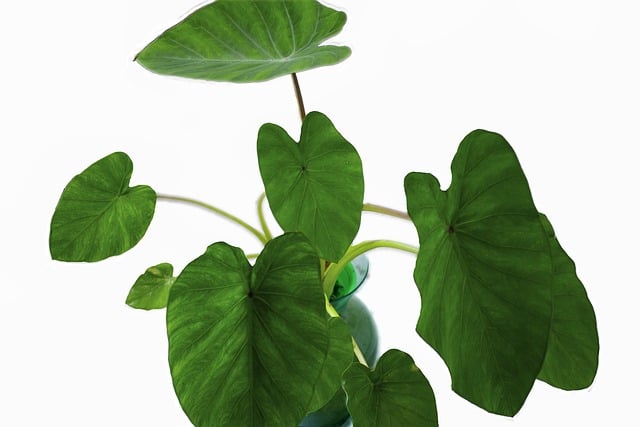Elephant ear plants are beautiful and exotic plants that add a touch of the tropics to any garden or indoor space. However, like any living thing, they can sometimes fall ill and begin to deteriorate.
If you notice your elephant ear plant is starting to wilt or its leaves are turning yellow, it may be dying. But don’t worry, there are steps you can take to save a dying elephant ear plant and bring it back to life.
The first step in saving a dying elephant ear plant is to identify the signs of deterioration. Overwatering is one of the most common causes of death in this plant. Elephant ear plants are native to tropical climates and cannot tolerate excessive amounts of water.
Underwatering, overexposure to sunlight, and pests can also cause your plant to wither and die. Once you have identified the cause of the problem, you can take steps to revive your elephant ear plant and prevent future problems.
Key Takeaways
- Identify the signs of a dying elephant ear plant, including wilting, yellowing leaves, and root rot.
- Understand the causes of deterioration, such as overwatering, underwatering, pests, and overexposure to sunlight.
- Revive your elephant ear plant by adjusting watering, pruning, repotting, and treating pests, and prevent future problems by providing the right amount of water, light, and nutrients.
Check out these other top posts in this category:
- How to Save a Dying Blueberry Plant
- How to Save a Dying Basil Plant
- How to Revive a Dying Heather Plant
Identifying the Signs of a Dying Elephant Ear Plant
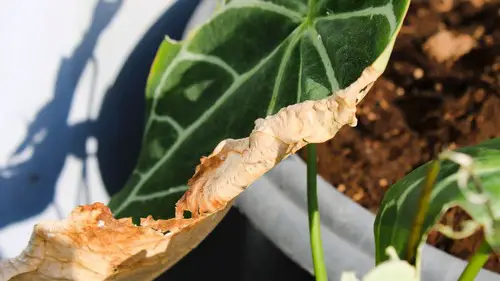
When it comes to saving a dying elephant ear plant, the first step is to identify the signs of distress. Here are the most common signs that your elephant ear plant is struggling:
1. Yellow and Drooping Leaves
Yellow and drooping leaves are one of the most common signs that your elephant ear plant is dying. If you notice that the leaves are yellowing or drooping, it could be a sign of overwatering, underwatering, or a lack of nutrients.
2. Root Rot and Overwatering
Overwatering is one of the leading causes of root rot in elephant ear plants. When the roots are constantly sitting in water, they can’t access the oxygen they need to survive. This can lead to root rot, which is a fungal disease that can quickly kill your plant.
If you notice that your elephant ear plant is drooping and the soil is constantly wet, it could be a sign of overwatering and root rot.
3. Pest Infestation and Diseases
Pests and diseases can also cause your elephant ear plant to die. Common pests that attack elephant ear plants include aphids, spider mites, mealybugs, and mites. These pests can suck the sap from the leaves, causing them to yellow and droop.
Diseases that can affect elephant ear plants include fungal and bacterial infections, rust, and scale insects. If you notice any signs of pests or diseases, it’s important to take action immediately to prevent further damage.
Understanding the Causes of Deterioration

When an elephant ear plant begins to deteriorate, it can be a concerning sight for any plant lover. Understanding the causes of deterioration can help identify the problem and take the necessary steps to save the plant. Here are some common causes of deterioration:
1. Inadequate Sunlight and Temperature
Elephant ear plants require a balance of direct and indirect sunlight to thrive. Insufficient sunlight can lead to stunted growth, yellowing of leaves, and even death. On the other hand, too much direct sunlight can scorch the leaves. It is important to place the plant in a location that receives bright, indirect sunlight for most of the day.
Temperature also plays a vital role in the growth of elephant ear plants. They thrive in warm temperatures between 65°F and 85°F. Temperatures below 60°F can cause the plant to stop growing and even die. It is essential to keep the plant in a warm location and avoid exposing it to cold drafts.
2. Improper Watering
Overwatering and underwatering are common reasons for the deterioration of elephant ear plants. Overwatering can cause root rot, which can prevent the roots from absorbing oxygen, leading to death. Underwatering can cause the plant to wilt and die.
It is important to check the soil moisture level before watering the plant. The soil should be moist but not waterlogged. During the growing season, water the plant when the top inch of soil is dry to the touch. In the dormant season, reduce watering frequency but do not let the soil dry out completely.
3. Nutrient Deficiencies
Elephant ear plants require a balanced supply of nutrients for healthy growth. A lack of essential nutrients such as nitrogen and phosphorus can cause the plant to deteriorate. Signs of nutrient deficiencies include yellowing leaves, stunted growth, and weak stems.
To prevent nutrient deficiencies, it is essential to fertilize the plant regularly. Use a balanced fertilizer with equal parts nitrogen, phosphorus, and potassium. Fertilize the plant every two weeks during the growing season and reduce the frequency during the dormant season.
Reviving Your Elephant Ear Plant
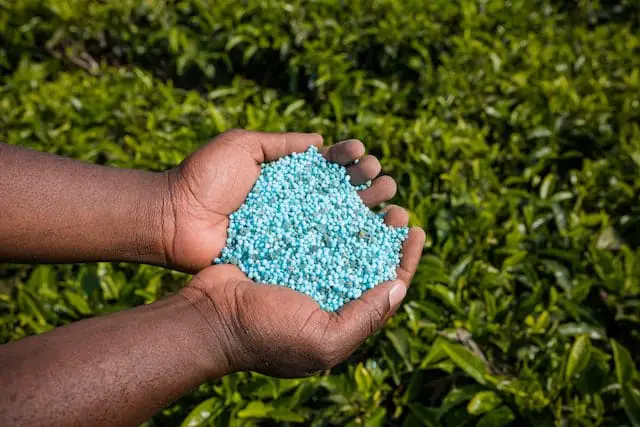
If your elephant ear plant is dying, there are several things you can do to revive it. Here are some tips to help you get started.
1. Balancing Water and Sunlight
One of the most common reasons why elephant ear plants die is due to overwatering or underwatering. To revive your plant, you need to find the right balance between water and sunlight.
First, make sure your plant is getting the right amount of sunlight. Elephant ear plants prefer indirect sunlight or partial shade, so avoid placing them in direct sunlight. Too much direct sunlight can cause the leaves to burn and turn yellow.
Next, check the soil. Elephant ear plants prefer moist, well-drained soil. If the soil is waterlogged, it can cause the roots to rot and the plant to die. On the other hand, if the soil is too dry, the leaves may turn brown and wilt.
To balance water and sunlight, water your plant deeply once a week, allowing the soil to dry out slightly between waterings. If the soil feels dry to the touch, it’s time to water your plant.
2. Fertilization and Soil Adjustment
Another way to revive your elephant ear plant is through fertilization and soil adjustment. Elephant ear plants require regular fertilization to grow healthy and strong.
To fertilize your plant, use a balanced fertilizer with equal amounts of nitrogen, phosphorus, and potassium. Apply the fertilizer every two weeks during the growing season, following the instructions on the package.
In addition to fertilization, you may need to adjust the soil to revive your plant. Elephant ear plants prefer soil that is rich in organic matter, such as peat, compost, or potting mix. You can also add perlite to improve drainage and prevent waterlogging.
3. Dealing with Pests and Diseases
Finally, if your elephant ear plant is dying due to pests or diseases, you need to take action to revive it. Common pests that can affect elephant ear plants include spider mites, mealybugs, and aphids. To get rid of these pests, use neem oil or insecticidal soap, following the instructions on the package.
In addition to pests, elephant ear plants can also be affected by diseases such as leaf spot, root rot, and fungal infections. To prevent these diseases, make sure your plant is not overwatered and has good air circulation. If your plant is already infected, you may need to use a fungicide to treat it.
By following these tips, you can revive your dying elephant ear plant and enjoy its beautiful foliage for years to come.
Preventing Future Problems
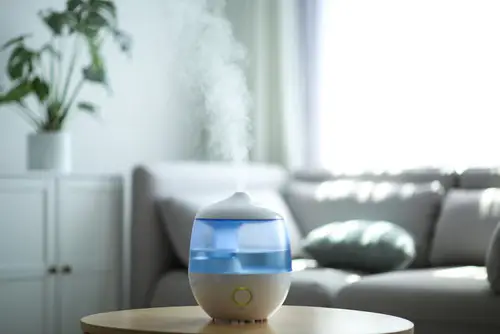
To prevent future problems with an elephant ear plant, it is important to ensure that the plant is located in the right place, maintained in the correct humidity and temperature, and given proper care and monitoring.
1. Choosing the Right Location
When choosing a location for an elephant ear plant, it is important to consider its natural habitat. These plants are native to tropical climates and require high humidity and consistent moisture to thrive. Therefore, it is best to place them in a location that receives indirect sunlight and is protected from harsh winds.
2. Maintaining Humidity and Temperature
Maintaining the right humidity and temperature is crucial for the health of an elephant ear plant. These plants require high humidity levels, so it is important to keep them in a room with a humidifier or place them on a tray of pebbles filled with water.
In addition, they prefer warm temperatures between 65-85°F. Avoid placing them near air conditioning or heating vents, which can cause the air to become too dry.
3. Proper Care and Monitoring
Proper care and monitoring are essential for the survival of an elephant ear plant. These plants require consistent moisture, but overwatering can be detrimental to their health.
It is important to monitor the soil moisture level and only water when the top inch of soil feels dry to the touch. In addition, it is important to fertilize them regularly with a well-balanced fertilizer to ensure they are receiving the proper nutrients.
Regularly inspect the plant for signs of pests or diseases, such as yellowing leaves or brown spots. Prune any damaged or dead leaves to promote healthy growth. Finally, it is important to monitor the plant’s growth and adjust its care accordingly.
By following these tips, you can help prevent future problems with your elephant ear plant and ensure that it thrives in its environment.
Additional Tips for Elephant Ear Plant Care
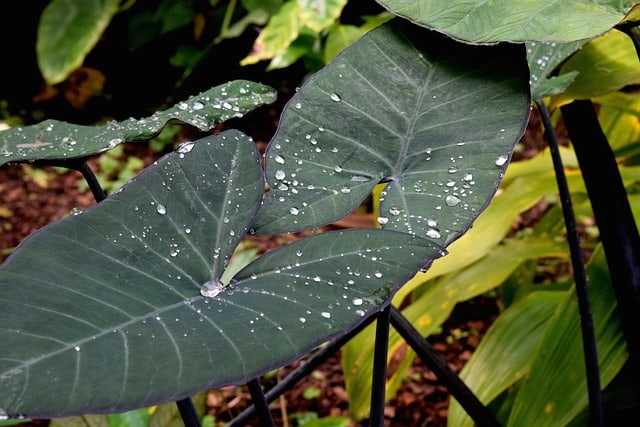
1. Winter Care
Elephant ear plants are tropical plants that thrive in warm climates. In colder regions, they need to be protected from frost and freezing temperatures. It is best to move them indoors during the winter months or to cover them with a protective layer of mulch or frost cloth.
When moving the plant indoors, make sure to place it in a location where it can receive bright but indirect light. Avoid placing it near drafts or heating vents, as this can cause the plant to dry out. Water the plant sparingly during the winter months, as it will not require as much water as it does during the growing season.
2. Repotting and Pruning
Elephant ear plants can grow quite large, and may need to be repotted from time to time. When repotting, choose a container that is one size larger than the current container, and use a well-draining potting mix.
Pruning is also important for maintaining the health and appearance of the plant. Remove any yellow or brown leaves, as well as any dead or damaged foliage. This will help to improve air circulation around the plant, which can help to prevent fungal diseases.
3. Dealing with Fungal Diseases
Fungal diseases can be a common problem for elephant ear plants, especially when they are grown in humid or damp conditions. To prevent fungal diseases, avoid overwatering the plant and make sure that it is planted in a well-draining soil mix.
If you notice any signs of fungal disease, such as black spots on the leaves or a white powdery coating, it is important to take action quickly. Remove any affected leaves, and treat the plant with a fungicide. You can also improve air circulation around the plant by pruning away any crowded or overlapping foliage.
Remember that proper care and maintenance are essential for the health and longevity of your elephant ear plant. By following these additional tips, you can help to ensure that your plant thrives and remains healthy for years to come.
Frequently Asked Questions
How do I revive a dying elephant ear plant?
To revive a dying elephant ear plant, it is important to identify the cause of the problem. Overwatering is one of the most common causes of death in elephant ear plants, so the first step is to check the soil moisture level.
If the soil is too wet, allow it to dry out before watering it again. If the soil is dry, water the plant thoroughly and ensure that the water drains out of the pot.
How can I save my elephant ear plant from dying?
To save an elephant ear plant from dying, it is important to address the underlying problem. Common problems include overwatering, underwatering, lack of light, and pests.
Ensure that the plant is receiving the right amount of water, light, and nutrients, and check for any signs of pests or diseases. Pruning can also help to promote new growth and encourage the plant to recover.
What are the common problems faced by indoor elephant ear plants?
Indoor elephant ear plants can face a range of problems, including overwatering, underwatering, lack of light, and pests. These plants are native to tropical climates and require high humidity and warm temperatures to thrive.
They are also prone to root rot if the soil is too wet, and can be affected by spider mites, mealybugs, and other pests.
How do I care for my elephant ear plant indoors?
To care for an elephant ear plant indoors, it is important to provide it with the right growing conditions. These plants require bright, indirect light and high humidity, so consider placing them near a window or using a humidifier.
Water the plant when the top inch of soil feels dry, and ensure that the pot has good drainage. Fertilize the plant every two weeks during the growing season with a balanced fertilizer.
What causes elephant ear leaves to turn yellow and brown?
Yellow or brown leaves on an elephant ear plant can be a sign of overwatering, underwatering, or nutrient deficiencies. If the soil is too wet, the roots may start to rot and the leaves may turn yellow or brown.
If the soil is too dry, the leaves may wilt and turn brown. Nutrient deficiencies can also cause yellowing or browning of the leaves.
Should I prune my elephant ear plant when the leaves are turning yellow?
Yes, pruning can help to promote new growth and encourage the plant to recover. When saving a dying elephant ear plant, it’s essential to get the plant to focus its energy on new growth.
Pruning can help to remove any dying leaves and promote new growth, so remove any leaves that are yellow or brown with a sterilized pruning tool. This will also help the plant save its energy for recovery rather than sustaining dying leaves.

Hey, I’m Lisa and I’ve been an avid gardener for over 30 years. I love writing, talking and living in the garden! Feel free to connect with me on my socials below

